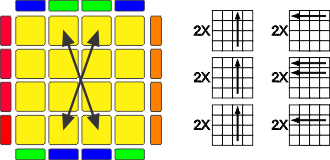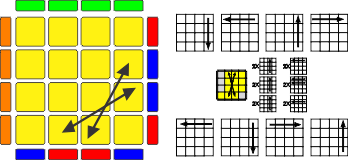4x4 parity occurs on the last layer of a 4x4, where you get a case that is not possible on a 3x3. This page show algorithms to solve it. PLL parity specifically occurs because two edge pieces are swapped diagonally with 2 other adjacent edge pieces. Generally you can't recognize it until you are at the last stages of your solve. Depending on the method you use it may look like you only have two corners swapped but actually you also have edges that are swapped.
PLL Parity case 1 (adjacent corner swap):
If you have two corners swapped adjacent to each other then you need 2 steps to solve. The first step swaps two corners and two edges and the second step swaps only the two edges.
Perform the algorithm with Yellow on top and the two swapped corners on your right.


PLL Parity case 2 (diagonal corner swap):
If you have two corners swapped diagonal to each other then you need 2 steps to solve. The first step swaps two corners and two edges and the second step swaps only the two edges.
Perform the algorithm below with Yellow on top and the swapped corners in the right front and back left positions..

Then perform the algorithm below with Yellow on top and the swapped edges in the front and right positions. (R' U R U' ) r2, U2, r2, Uw2, r2, u2, (U R' U' R )

| Rw | BOTH Right Layers | |
| r | INNER Right Layer | |
| Uw | BOTH Top Layers | |
| u | INNER Top Layer | |
| X | Turn the cube clockwise around the X-Axis | |
| X' | Turn the cube anti-clockwise around the X-axis |



2 comments
Bkb
This is one of the most useful parity guides on the internet. Kudos!
Larry
What do the parentheses mean?